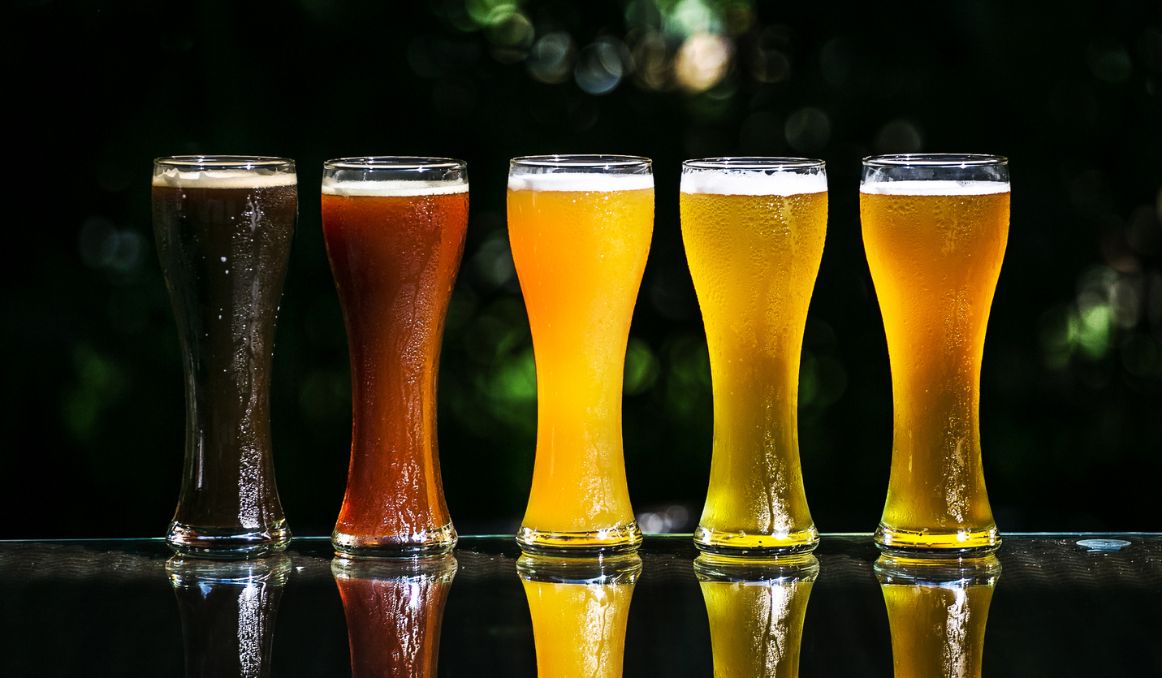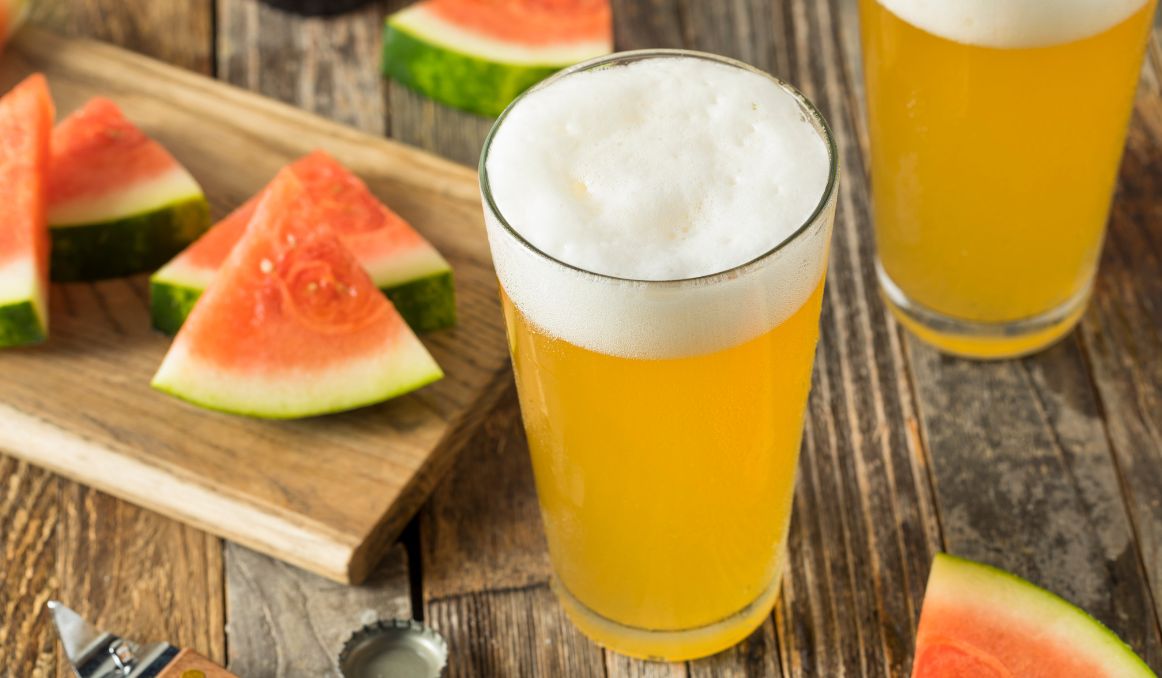Sweet Beer Types: Your Need to Know
For millennia, brewers have been trying to find the right balance between the malty sweetness of beer and the bitterness of the hops, typically leaning toward more hops and more bitterness.
But lately, more and more people have been seeking out a little less hops, going in search, instead, of sweet beer types.
So, what is up with sweet beer? What is it? And how do you find it?

Making Beer
Realize first that in the beginning, all beer was sweet.
After all, beer was originally the result of a happy accident made thousands of years ago when an unsuspecting farmer left a barley meal, a cream of wheat, or an oatmeal batch out for too long.
This is the most likely explanation for beer, though there are others.
Thousands of years ago, as humans began domesticating, irrigating farms, and growing crops, one of the first inventions was the toasted cereal grain.
Toasting the grains made them sweeter, and mixing them with water and other herbs and spices made for an easy and nutrition staple meal that could last for days in a large pot.
But, again, left out for too long, this meal would attract local wild yeast and begin to ferment.
Before you know it, you have beer.
Some brave soul dared to try the end result of a frothy, foamy liquid made from grains left out too long, and the slight intoxication that was the inevitable consequence led to the rise of brewing.
From that point, brewers have been perfecting their craft.
At first, beer was just toasted grains ground and mashed with hot water and left out to ferment.
Quickly, however, beer drinkers wanted a stronger, and less sweet brew.
So herbs were added for complexity.
A few hundred years ago, those herbs were swapped out for the universally accepted bittering factor – hops.
Since then, the race to make a more and more bitter brew has been on.
Sweet Beer
But it is critical we remember that beer has always been sweet in its original incarnation.
Particularly with lower alcohol tolerant yeast, beer would come out tasting more like sweet, toasted bread.
After all, beer becomes beer because yeast is attracted to the fermentable sugars in the wort. With a yeast that is naturally inclined to offer low attenuation, meaning it converts less of the sugars into alcohol, you will have a slightly alcoholic, sweet beer.
For hundreds of years, if not more, families relied heavily on this sweet beer to perform as their primary source of hydration and even nutrition.
Beer, back then simply called ale, was safe to drink on two fronts – the water was boiled and the alcohol killed any remaining toxins.
In contrast, running streams and rivers could be highly polluted. And no one had running water to simply turn on a tap for a glass of water.
Many children’s lives were saved thanks to the nutrients and hydration provided by ale, or what would have been sweet beer back then.
Sweet Beer Types
Today, we call any beer that is not heavy in hops a sweet beer.
Sometimes they are even referred to as “girly beers,” as if somehow a preference for bitterness makes you more manly and wanting a sweet beverage makes you feminine.
In any event, if you are hunting for a sweet beer, look first for the IBUs, or the international bitterness units, which tell you about the balance between sweet and bitter. The more IBUs, the less sweet your beer will be.
Also look for more malt flavors, mochas, chocolates, and fruit beers. Wheat beers also tend to be less hoppy and more on the sweet side.
Now that we have lagers as well as ales, you can find a range of sweet beers on both sides of the fermentation scales.
Your Need to Know
Some sweet beers to look for at the market that have rave reviews from sweet beer lovers:
- Bud Light Lime
- Blue Moon Belgian White
- Dundee Original Honey Brown
- Hoegaarden Original White Ale
- Corona Extra
- Samuel Smith’s Organic Chocolate Stout
Tips for Making Your Beer Sweeter
If you’ve been trying to figure out how to lean more on the sweet side when brewing, we’ve got some tips for you.

Mash at a Higher Temperature
The higher the temperature you mash in your grain, the less the enzymes will break up the starches into fermentable sugars, which means the more sugar your beer will retain in the end, obviously also with a lower alcohol content. This process will also increase the body and head retention of your beer. Think of a frothy wheat beer.
Have you optimized grain sugar extraction? Test it out with our handy Mash Efficiency Calculator!
Boil Longer
If you don’t add your hops before your boil, instead opting to dry hop, and you boil your grain for longer, you can induce the Maillard reaction, which will draw out sweeter, caramel flavors from your grain, producing a more naturally sweet beer.
Use a Less Attenuative Strain
As we mentioned above, you can choose a yeast strain with lower attenuation, which will allow more sugar to remain in your brew during fermentation, and ultimately create a sweeter beverage.
Use More Caramel Malt
Adding more caramel malt to your brew will bring more malty, caramel, toffee notes to your brew, as well as hints of raising and burnt sugar, all of which lend sweetness. Just be sure not to add too much caramel malt. You don’t want your brew to be sickeningly sweet.
Add Sugar
In the end, you can always add an unfermentable sugar after fermentation is complete. Lactose sugar is a big hit in many circles, but of course purists will say that adding sugar to make beer sweet is cheating when you can evoke natural sweetness from your grains.
We say to each his own.
Cheers!
Passionate about the beer and/or wine making process? So are we! If you’re interested in finding out how you can use our technology to control fermentation and monitor your yeast, save work hours and improve the cost-efficiency of your business, drop us a line at [email protected] or check out our product pages:
- Oculyze BB 2.0 (Better Brewing) Yeast Cell Counter App + Hardware
- Oculyze FW (Fermentation Wine) Yeast Cell Counter App + Hardware
Also, you can now get access to a fully functional demo account to test your yeast via our Web App. Completely free of charge and with no commitment to purchase.
Sources:


